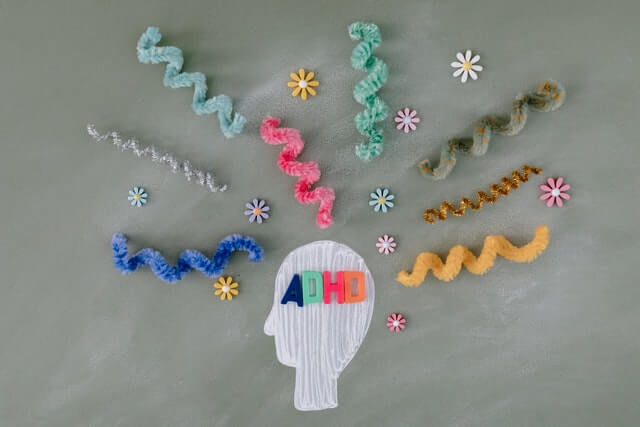Navigating emotional highs and lows is part of life. After all, we all deal with anger, frustration, and impatience from time to time. However, for people with ADHD, emotions are amplified.
The hallmark symptoms of Attention-Deficit/Hyperactivity Disorder (ADHD) are inattention, impulsivity, and hyperactivity. Yet many people with ADHD also struggle with their moods. They may feel happy and excited one moment, then angry and irritable the next.
This article explains why ADHD mood swings happen and offers strategies to cope with emotional highs and lows.
ADHD and Mood Swings: Why It Happens
People with ADHD are more likely to experience mood swings for several reasons:
Tendency Towards Depression & Anxiety
People with ADHD are more likely to deal with depression and anxiety. One study found that children ages 4-6 with ADHD were at increased risk of depression and suicide attempts when they reach their adolescent years.
But research shows adults with ADHD are more prone to mood disorders as well. In fact, adults with ADHD are four times more likely to have an anxiety disorder.
Difficulty Focusing

People with ADHD often have difficulty focusing and completing tasks. This can lead to frustration, irritability, or shutting down altogether. Feeling distracted and struggling to pay attention non-stop can fuel a steady stream of anxiety.
Feeling “Different”
Being unable to perform tasks the way that non-ADHD peers do, can lead to frustration and anger. Over time this can damage self-esteem. This is especially true for children in the school environment.
Heightened Sense of Emotions
People with ADHD feel things deeply. Problems at school, work, or home that may seem minor to others may feel overwhelming to someone with ADHD.
They may become easily irritated or frustrated when interrupted during interesting tasks. But they may also be quick to anger due to impulsivity. This can create embarrassment and regret later once the emotional overreaction has passed.
ADHD Medication
ADHD medications can help cognitive symptoms, but not emotional ones. They can even aggravate mood swings in late afternoons or evenings as their effects wear off.
When stimulant medications leave the body too quickly, it can cause a medication rebound. Symptoms can return with a vengeance. This may lead to sadness, irritability, or increased hyperactivity. The mood swings typically last around an hour.
10 Ways to Manage ADHD Mood Swings
While ADHD can heighten emotional highs and lows, you do have the power to learn the tools to ride the waves. Here are ten coping techniques that can help manage ADHD mood swings:
1. Let Yourself Vent
Feelings are meant to be felt. So don’t stuff them. Instead, set aside time each week (or even each day) to let off steam. This’ll look different for everyone, so play around until you find activities that give you an emotional release. Here are a few ideas to get you started:
- Do a vigorous fitness class
- Journal
- Punch a pillow or punching bag
- Blast loud music
- Sing
- Dance
- Talk to a friend or family member
- Or whatever else helps you let go…
Venting can bring emotions center stage. After all, that’s the point! But make sure you also dedicate time towards grounding, calming activities.
2. Take a Break
When you’re feeling frustrated, sometimes the best thing you can do is take a breather. So when emotions get intense, give yourself permission to take a break.
Try switching activities for a few minutes. Going for a short walk or taking a few slow deep breaths may be just what you need to help settle yourself.
3. Try Cognitive Behavioral Therapy (CBT)
People with ADHD often deal with frequent setbacks at school, in social situations, and on the job. Over time this can lead to low self-esteem and negative self-talk.
Cognitive Behavioral Therapy (CBT) trains you to restructure your thoughts toward a more compassionate internal dialogue. CBT can even help you learn problem-solving skills and relaxation techniques to manage ADHD mood swings.
Research shows teens with ADHD show more symptom improvement with CBT than with medication alone. In one study, CBT eased symptoms of depression and anxiety in college students with ADHD. Best of all, the benefits held for 5-7 months after treatment ended!
Need help finding a therapist in your area who practices CBT? Click here.
4. Exercise Often
What helps burn off stress and gives you an endorphin boost to boot? Yep – exercise! Research shows that exercise reduces anxiety and depression while improving cognitive function and self-esteem.
Just don’t overdo it. Overexercising can elevate the stress hormone cortisol, which is linked with depression.
So how much exercise is enough? The CDC recommends that adults get 150 minutes of moderate-intensity activity a week and two days of muscle-strengthening activities. Find some activities you enjoy, and stick with them!
5. Clean Up Your Diet
Many people claim that artificial colorings and food additives are to blame for ADHD. While there’s no conclusive evidence to prove that, science does suggest that food dyes can exacerbate ADHD symptoms.
Processed foods are devoid of the nutrients needed for a healthy brain. But they’re also packed with sugar. This can take your blood sugar on a roller coaster ride – along with your mood.
Eating a fiber-rich diet filled with whole foods such as fruits, vegetables, whole grains, and lean protein will help keep your blood sugar and mood stable.
6. Get Solid Sleep
If you want to keep your mood steady, make sleep a priority. Studies show that not getting enough sleep increases both depression and anxiety.
The trouble is, between 25-50% of people with ADHD struggle with sleep. This may be partly due to stimulant medications, which are known to disturb sleep.
But don’t worry! There are plenty of ways to improve your sleep. For starters, set a consistent sleep schedule and stick to it. Also, try limiting screen time one hour before bed. Electronic devices emit blue light, disrupting your body’s circadian rhythm.
For more tips on how to get a good night’s sleep, check out this article.
7. Use Your Hyperfocus to Your Advantage
One confusing symptom of ADHD that may seem contradictory is hyperfocus. Hyperfocus is the ability to zero in on an interesting task for lengthy periods. Some people with ADHD can become so immersed in projects that they are oblivious to their surroundings. Time stands still.

So, when you find your mood shifting in a negative direction, use your hyperfocus to your advantage. Try refocusing your attention on a passion project. This can help you snap out of unhelpful thought loops causing distress.
8. Prep For The “Blues”
While there is an upside to hyperfocus, there’s a downside too. It’s called the hyperfocus hangover, also known as “depression after success.” This is when an emotional crash follows an exciting event or success.
For some people with ADHD, once the excitement is over, it can feel like a huge letdown. So be prepared – have a project or activity waiting in the wings for when the crash comes. Keeping your attention pointed towards things that light you up will make those emotional funks less likely.
9. Use Humor
There’s a reason for the expression “laughter is the best medicine” – because it’s true! Laughter has proven psychological benefits such as improved stress, depression, and anxiety. Learning to joke with yourself about your ADHD symptoms can help break negative thought loops and help you lighten up.
That’s not to say you should laugh off all your mistakes. You do need to take responsibility for your actions. But if you can playfully poke fun at yourself, there’s a good chance others will be more forgiving and sympathetic.
10. Try Supplements
Certain nutrients may help manage ADHD mood swings. Here are a few:
Omega-3 Fatty Acids
Research shows that children and teens with ADHD tend to have lower levels of omega-3 fatty acids, a key nutrient for brain health.
In one study of children and young adults with ADHD, omega-3 supplementation improved hyperactivity, impulsivity, inattention, and short-term memory.
Magnesium
People with ADHD tend to be deficient in magnesium. This is unfortunate, as magnesium is essential for the brain and low magnesium levels are linked with depression.
Magnesium helps you chill out by triggering your parasympathetic nervous system (aka “rest and digest” mode). Its relaxing effects are shown to improve sleep quality and ease anxiety.
Magnesium may be especially helpful when stimulant medications wear off and symptoms amp up.
Vitamin D
Research shows people with ADHD often have low levels of Vitamin D, which is linked with depression and anxiety. That’s why getting enough vitamin D is critical for managing the mood swings that ADHD can stir up.
For example, in one study, children who received vitamin D supplementation showed significant improvement in impulsivity, inattention, and hyperactivity.
You can get a free dose of vitamin D from regular sunshine. Yet, over 40% of Americans don’t get enough Vitamin D. Supplementation can help fill in the gaps.
Zinc
Zinc is a trace mineral with an enormous impact on our central nervous system. It is involved in the synthesis and production of serotonin (the “happiness hormone”, which influences mood and sleeping patterns) dopamine (a chemical that regulates pleasure, pain, and energy levels), and norepinephrine (better known as the “stress hormone”). This mineral also keeps under control various substances that affect our behavior, learning process, attention, and concentration. Out of these, the most important are melatonin and fatty acids.
Grape Seed Extract
Children diagnosed with ADHD demonstrate higher levels of oxidative stress than children without ADHD. Higher levels of oxidative stress increase tissue damage, and the type of free radicals that is present in people with ADHD make them more vulnerable to heart disease. As a result, potent antioxidants like grape seed extract that provide protection against excessive oxidative stress and heart disease risk factors, therefore, may be beneficial for those with ADHD. Grapeseed is easily absorbed and utilized by the body and it provides potent protection against free radicals and damage to cells and DNA.
Lemon Balm Extract
Lemon balm, or Melissa officinalis, has been used as an anti-anxiety, sleep-inducing, and memory-enhancing nutrient for over 2,000 years. Clinical trials have provided scientific evidence for the impact of lemon balm, demonstrating its ability to improve mood, reduce stress, and help improve sleep quality. One study that investigated the impact of lemon balm extract on 20 stressed volunteers over a 15 day period found that anxiety was reduced in 70% of the study participants and insomnia was reduced in 85% of them. Given that ADHD patients often experience stress and suffer from a high rate of insomnia, lemon balm extract is likely a helpful supplement for these patients.
Saffron
There is evidence to suggest that saffron (Crocus sativus) can be beneficial to those with ADHD. Initial studies have demonstrated that saffron is effective as methylphenidate in improving ADHD symptoms over a 6-week period. Another recent study echoed these findings.
Coping Strategies
People with ADHD face many challenges such as inattention, hyperactivity, and impulsivity. Yet, they’re also more likely to struggle with mood swings. Luckily, many coping strategies and lifestyle habits can help you weather those emotional storms:
- Let yourself vent
- Take a break
- Try Cognitive Behavioral Therapy (CBT)
- Move your body
- Clean up your diet
- Get quality sleep
- Take advantage of your hyperfocus
- Prep for the “blues”
- Laugh often
- Try an omega-3, magnesium, vitamin D, or a combination supplement with ingredients for promoting attention and focus
Implementing these coping techniques will build self-awareness and help you or your loved one better navigate ADHD mood swings in the future.


